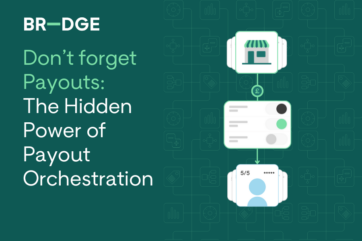
Why Resilience Matters

Every day, 3.6 trillion digital transactions move across cards, wallets, bank transfers and open banking rails. That flow connects millions of businesses with their customers, powering commerce across every market.
But when the flow falters, it matters. Payment failures don't always arrive with alarms blaring. In busy peak periods, the first signs can be small: fewer transactions clearing on the first attempt, one market’s connection timing out, a risk rule blocking legitimate customers. Soon the impact spreads - baskets go unfinished, support queues lengthen and revenue slips.
Resilience keeps merchants selling and makes change easier. In an outage, payments reroute automatically, backups take over in seconds and peaks are absorbed, so customers keep checking out and revenue keeps moving. The same capability helps merchants adapt to new rules and regulations, meet how customers want to pay, and stay free from dependence on any single provider or route.
Millions lost when payments stall
Our recent research findings reveal the price merchants pay when resilience isn’t built in. 92% of enterprise e‑commerce merchants report outages in the past two years. Half say losses reach between £1.1 million and £10 million. Another 34% put losses between £100,000 and £1 million, while 4% face losses exceeding £10 million.
It isn’t confined to one corner of the market. Merchants at every scale are affected - from those processing £500 million+ annually, where every single one reports losses, to those with low‑value baskets under £100, where 60% still see disruption eating into revenue. And behind those figures sit further costs: support hours, refunds and credits, and marketing spend to win back customers.
Growth ambitions are under pressure too. 54% of merchants say payments have delayed or prevented entry into new markets, with food delivery, gaming and single‑market European operators most exposed. At higher volumes, the constraint is universal: every merchant processing 500 million+ transactions say payments are holding back expansion.
What resilience does
Resilience should make busy days feel routine. Customers get through on the first attempt; with the payment options they expect. Support queues stay short and reconciliation runs clean. Product and engineering spend time improving journeys instead of patching them. Finance gets predictable settlement. Commercial teams keep leverage because you can route on performance and price, and switch partners without problems. Pace improves too: local rails go live faster, new methods roll out safely, and launches don’t stall.
Sector by sector, the focus shifts. Food delivery cares about evening peaks and strong tokens. Gaming needs smooth, first-time fund flows across borders. Travel leans on alternative rails when cards dip. Retail needs continuity in-store and online. Different pressures, same goal: keep customers paying and keep the business moving.
Introducing the Payments Resilience Playbook
Resilience now sits on the board agenda. It influences revenue, brand confidence and the ability to enter new markets.
To support merchants in building that capability, BR‑DGE has launched the Payments Resilience Playbook, a hands‑on guide built on real merchant scenarios. It sets out practical steps to prevent downtime, reroute transactions when problems arise, and lift approval rates without tearing up existing systems. It is designed for enterprise e‑commerce teams, where payment leads and platform architects need to change gear fast when behaviour shifts, regulation evolves and new tech emerges.
The Payments Resilience Playbook is available to download now
Related content





